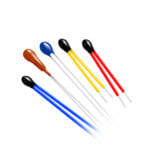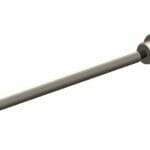Edge computing is one of 2020’s most common buzzwords, so let’s look inside to understand what Advantech offers for edge computing solutions, and how these are designed to fulfill three important pillars:
- Open standards
- Modularity
- Value beyond just hardware
Open standards
Open standards are a way of accelerating automation innovation. In the past, the automation world has been trapped within the proprietary architectures of its key suppliers. As a result, interoperability was low, resulting in slow adoption of the innovations happening in the IoT world. Adopting open standards for platform architectures, protocols and interfaces significantly increases interoperability between systems making it quicker and easier to follow emerging trends in the market. Advantech edge platforms adopt many of the open standards common in the computing, IoT and automation markets, ensuring users can easily plug and play in a heterogeneous automation environment. For example, OPC UA is an increasingly common communication standard protocol within Europe. Adopting Advantech edge computing solutions enables users to interact using this protocol no matter which type of edge device is being used (for example, data concentrator, data visualization, edge gateway).

Modularity
The second pillar is a strong point within an industrial edge computing manufacturer proposition. It is obvious that “one size does not fit all” in edge devices in the industrial world. Instead, device selection is a compromise between cost, functionality, environmental constraints and future capability.
Modularity means having options, not only in the features of the core base unit, but also in the amount and flexibility with which these can be expanded to meet the particular demands of an individual implementation. Selecting devices which follow a modular approach has two big advantages:
- System validation can be performed once because any software image is always compatible across the range of expansion
- The cost of the solution can be tailored to the specific need of each customer installation.
Modularity is an advantage in many scenarios but in edge computing it is especially beneficial:
- reduces maintenance complexity by reducing the number of different platforms deployed
- reduces stocks required for spares holding
- reduces complexity of code development by providing consistent platforms across multiple installation profiles
Clearly, modularity offers some key benefits. Advantech promotes this concept across a large variety of products ranging from HMIs which allow a single computer platform to be fitted interchangeably across multiple monitor sizes, through to ‘box computers’ with internal expansion options and slice I/O designs accommodating large amounts of I/O expansion. For example, the iDoor internal expansion system was launched in 2014 and now features more than 40 expansion options across a range of base units. Different interfaces can be implemented via simple selection because integration has been already provided.

Value beyond just hardware
The third pillar recognizes that it is no longer enough to simply provide a range of different edge hardware solutions. Software platforms, tools and ready-to-go solutions that accelerate system implementation are increasingly important to both end users and system integrators. This is especially true where these address issues outside their core competence, leaving them able to concentrate on adding value in their niche vertical.
Here, Advantech offers complete platforms distilling much of the knowledge and experience gained from nearly 40 years of producing industrial computing and communications technology. These allow systems integrators to develop projects through simple configuration rather than coding, secure in the knowledge that the core solution is already tested and compatible with the underlying hardware. An example of this winning combination of an edge software platform deployed across multiple hardware platform options is EdgeLink. The combination results in a smart legacy protocol conversion tool allowing users to easily acquire data from legacy automation equipment such as PLCs and metering and forward this in a coherent way using modern, open protocols without the need for any coding.

The three pillars create a unique platform for the future which is open, flexible and complete, and which turns a good industrial manufacturer into a key player in co-creating the future of the IoT world.








